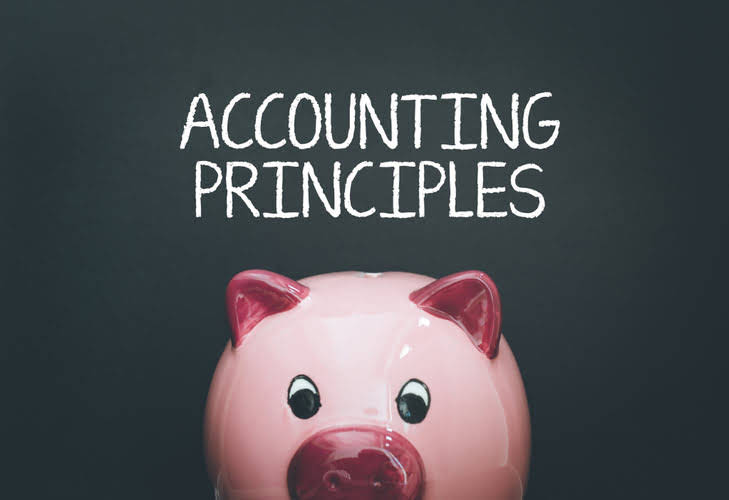Small Business Calculators: Debt to assets ratio
Content

So if a company has total assets of $100 million and total debt of $30 million, its debt ratio is 0.3 or 30%. Is this company in a better financial situation than one with a debt ratio of 40%? A ratio greater than 1 shows that a considerable amount of a company’s assets are funded by debt, which means the company has more liabilities than assets. A high ratio indicates that a company may be at risk of default on its loans if interest rates suddenly rise.
- On the other hand, a change in total assets will lead to a change in the debt-to-total asset ratio in the opposite direction, either positive or negative.
- One would expect a biotech startup to have a different profile compared to a steel manufacturer.
- Adam received his master’s in economics from The New School for Social Research and his Ph.D. from the University of Wisconsin-Madison in sociology.
- A ratio that is less than 1 or a debt-to-total-assets ratio of less than 100% means that the company has greater assets than liabilities.
- Conceptually, the total assets line item depicts the value of all of a company’s resources with positive economic value, but it also represents the sum of a company’s liabilities and equity.
- Total-debt-to-total-assets is a leverage ratio that defines how much debt a company owns compared to its assets.
We’re firm believers in the Golden Rule, which is why editorial opinions are ours alone and have not been previously reviewed, approved, or endorsed by included advertisers. Editorial content from The Ascent is separate from The Motley Fool editorial content and is created by a different analyst team. If you’re using the wrong credit or debit card, it could be costing you serious money.
Debt-to-Total-Assets Ratio FAQs
A ratio that is greater than 1 or a debt-to-total-assets ratio of more than 100% means that the company’s liabilities are greater than its assets. A ratio that is less than 1 or a debt-to-total-assets ratio of less https://www.bookstime.com/ than 100% means that the company has greater assets than liabilities. A ratio that equates to 1 or a 100% debt-to-total-assets ratio means that the company’s liabilities are equally the same as with its assets.

See more about financial ratios in the Documentation for the Farm Sector Financial Ratios. Whether you’re looking to invest in the stock market or take your business to the next level, there are a handful of crucial formulas and definitions to understand to help you get you where you want to be. If you’re ready to learn your company’s debt-to-asset ratio, here are a few steps to help you get started. The debt-to-asset https://www.bookstime.com/articles/debt-to-asset-ratio ratio indicates that the company is funding 31% of its assets with debt. If you read this article to be able to better analyze companies for stock picking, it should be clear by now that there is significant analysis that goes into company ratings. Financial professionals have years of education and training to be able to deep-dive into these balance sheets and analyze all the variables mentioned above and more.
How does the debt-to-total-assets ratio differ from other financial stability ratios?
In order to perform industry analysis, you look at the debt-to-asset ratio for other firms in your industry. Advisory services provided by Carbon Collective Investment LLC (“Carbon Collective”), an SEC-registered investment adviser. There is no definitive answer to this question as the ideal debt to asset ratio varies depending on the industry a company is in. For example, the debt ratio of a utility company is in all likelihood going to be higher than a software company – but that does not mean that the software company is less risky.
For this formula, you need to know the company’s total amount of debt, short-term and long-term, as well as total assets. A debt is considered short-term if it is expected to be repaid within one year. The debt to asset ratio is mostly used by creditors, lenders, and investors.
Build your dream business for $1/month
The debt to asset ratio is a relation between total debt and total assets of a business, showing what proportion of assets is funded by debt instead of equity. The farm sector balance sheet provides a market value estimate and forecast of farm sector assets, debts/other liabilities, and wealth (e.g., equity or net worth) as of December 31. It differs from individual business and corporate balance sheet accounts that are based on historical cost accounting concepts.
What is a 0.2 debt ratio?
A company that has a total debt of $20 million out of $100 million total assets has a ratio of 0.2. This ratio explains the portion of the capital structure of a business that has been funded by debt.
All company assets, including short-term, long-term, capital, tangible, or other. What counts as a good debt ratio will depend on the nature of the business and its industry. Generally speaking, a debt-to-equity or debt-to-assets ratio below 1.0 would be seen as relatively safe, whereas ratios of 2.0 or higher would be considered risky. Some industries, such as banking, are known for having much higher debt-to-equity ratios than others.
What is the Debt to Asset Ratio?
It indicates that the company uses only adequate leverage to acquire assets. You can assume that the company acquired its assets through its cash flows or by raising equity. The debt-to-total-asset ratio changes over time based on changes in either liabilities or assets. If there is a significant increase in total liabilities, then this will affect the debt-to-total asset ratio positively.
Is 13% a good debt ratio?
An ideal debt-to-income ratio should be 15% or less. Ratios between 15% and 20% may lead to problems making payments while paying other bills on time. Once debt-to-income ratios exceed 20%, problems with repayment increase dramatically. At this point, seeking help from a trained consumer credit counselor may be needed.
It should be noted that the total debt measure does not include short-term liabilities such as accounts payable and long-term liabilities such as capital leases and pension plan obligations. The higher the debt ratio, the more leveraged a company is, implying greater financial risk. At the same time, leverage is an important tool that companies use to grow, and many businesses find sustainable uses for debt. Acceptable levels of the total debt service ratio range from the mid-30s to the low-40s in percentage terms.
Total-Debt-to-Total-Assets Ratio: Meaning, Formula, and What’s Good
While this may, in part, be a characteristic of its industry, it may present a higher risk of insolvency to investors and lenders. For example, a company with $2 million in total assets and $500,000 in total liabilities would have a debt ratio of 25%. Companies with high debt-to-asset ratios may be at risk, especially if interest rates are increasing. Creditors prefer low debt-to-asset ratios because the lower the ratio, the more equity financing there is which serves as a cushion against creditors’ losses if the firm goes bankrupt. Creditors get concerned if the company carries a large percentage of debt.

We strive to empower readers with the most factual and reliable climate finance information possible to help them make informed decisions. Our writing and editorial staff are a team of experts holding advanced financial designations and have written for most major financial media publications. Our work has been directly cited by organizations including MarketWatch, Bloomberg, Axios, TechCrunch, Forbes, NerdWallet, GreenBiz, Reuters, and many others. Our goal is to deliver the most understandable and comprehensive explanations of climate and finance topics. We follow ethical journalism practices, which includes presenting unbiased information and citing reliable, attributed resources. Much of our research comes from leading organizations in the climate space, such as Project Drawdown and the International Energy Agency (IEA).
How To Value A Company: An In-Depth Guide To The Business Valuation Process
This means that for every $1 of the company owned by shareholders, the business owes $2 to creditors. The debt-to-asset ratio can be useful for larger businesses that are looking for potential investors or are considering applying for a loan. From the calculated ratios above, Company B appears to be the least risky considering it has the lowest ratio of the three. All else being equal, the lower the debt ratio, the more likely the company will continue operating and remain solvent. This may be advantageous for creditors because they are likely to get their money back if the company defaults on loans. This measure is closely watched by lenders and creditors since they want to know whether the company owes more money than it possesses.
One drawback with the use of debt ratio is that it bundles all the different types of assets into one basket. There is no mechanism to distinguish the quality of the assets acquired by leverage. The company in this situation is highly leveraged which means that it is more susceptible to bankruptcy if it cannot repay its lenders.
Step 1. Capital Structure Assumptions
Trend analysis is looking at the data from the firm’s balance sheet for several time periods and determining if the debt-to-asset ratio is increasing, decreasing, or staying the same. The business owner or financial manager can gain a lot of insight into the firm’s financial leverage through trend analysis. This tells you that 40.7% of your firm is financed by debt financing and 59.3% of your firm’s assets are financed by your investors or by equity financing. In other words, investors often try to assess if the value of investments to the company—usually in the form of stocks—will potentially go up or go down in the long run. Debt to asset is also sometimes referred to as the debt ratio since they have a very similar formula. While it may be beneficial for companies to have lower debt ratios in order to attract investors, this number should not be too low because the company will need some level of funding in order to operate successfully.

 FLI
FLI
